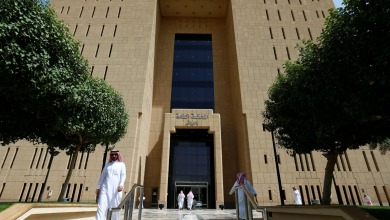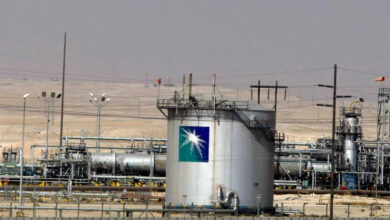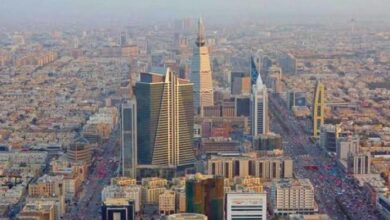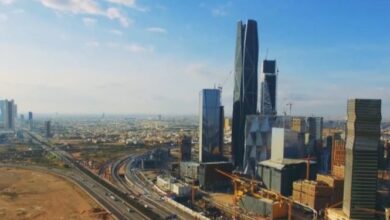Serious risks to the Kingdom’s economy are confirmed by the budget deficit
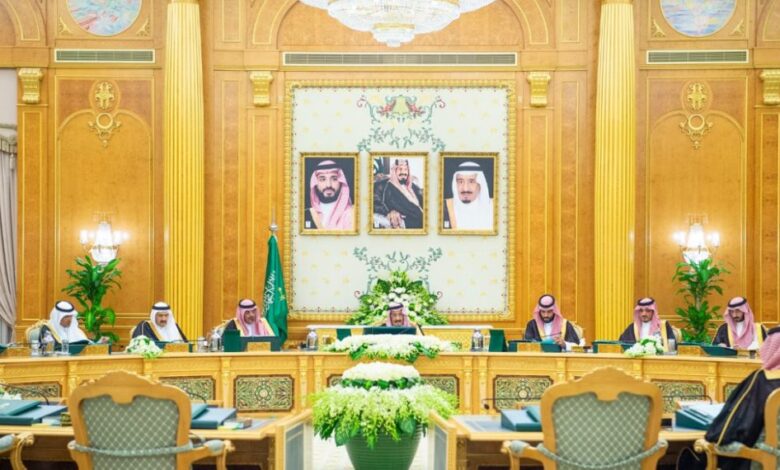
Observers unanimously agree on the existence of critical risks threatening the Kingdom’s economy, which was confirmed by the deficit in its projected budget for 2020, which witnessed a sharp reduction in expected expenditures within a deficit that is likely to rise to the threshold of 50 billion dollars.
The deficit is due to the decline in oil production, lower oil prices, the Saudi regime’s failure to manage the economic issue and the corruption of its symbols, as well as the failure of the Kingdom’s 2030 vision.
The budget deficit contrasts with the promotion of the Saudi regime to its endeavor to finance a plan for economic transformation and major projects in non-oil sectors, including entertainment and tourism.
The expected expenditures for the coming year amounted to 1020 billion riyals, or about 272 billion dollars, with the deficit reaching 131 billion riyals, or 50 billion dollars.
In 2019, actual expenditures amounted to 1048 billion riyals, or 279.4 billion dollars, while the deficit reached 131 billion riyals, or 35 billion dollars, according to Ministry of Finance figures.
And the Kingdom is witnessing a deficit in its budgets five years ago, when oil prices fell significantly, and recently stabilized at the level of 50 and 60 dollars. Between 2014 and 2019, the total budget deficit reached about $385 billion.
The Kingdom agreed with other producing countries to cut production in an attempt to raise crude prices. Last week, OPEC members and their partners, including Russia, announced after a meeting in Vienna that they had agreed to further reduce their oil production by at least an additional 500,000 barrels per day to support crude prices.
Lifting this reduction will raise the production limit to 1.7 million barrels per day for the group of 24 countries as of January 1, 2020.
The Saudi regime spends billions of dollars on tourism, real estate and entertainment projects as part of the controversial steps of Crown Prince Mohammed bin Salman to open up in the Kingdom, representing a coup against the values of conservative Saudi society.
The figures published on the website of the Ministry of Finance for the general budget of the Kingdom for 2020 bear a negative image – despite the possibility of changing it when issuing the real budget – in terms of declining value of revenues and expenditures and the increase in the value of public debt, as well as high rates of inflation.
All these indicators are capable of exporting a negative image of the reality of the Kingdom’s economy and its investment climate, according to the Ministry of Finance figures, which are published on its website, and that public revenues are expected to decrease from 917 billion riyals ($244 billion) to 833 billion riyals ($222 billion), i.e. The expected value of the decline in public revenues is estimated at 84 billion riyals, representing 9.1%.
As for expenditures, it is expected that it will also decline in 2020 to 1020 billion riyals (272 billion dollars) after it was in 2019 about 1048 billion riyals (279 billion dollars), meaning that the value of the decline in public expenditures is expected to be 28 billion riyals, which represents 2.6%.
It was hoped that, in light of the expansion of public debt, that public expenditures would increase, if they did not remain as they are in 2019, in order to maintain a state of economic activity, which gives hope to the business community, and improves the standard of living of the citizen.
The announced figures reflect a deficit between revenues and expenditures in the Kingdom’s budget in 2020, with an estimated value of about 187 billion riyals, which will be funded through debt, which is estimated to increase during the next year to reach 754 billion riyals compared to 687 billion riyals, meaning that there is an increase Expected in the Saudi public debt, about 67 billion riyals.
The decline in public expenditures in the Kingdom during the next year reflects a state of pessimism about the economic situation. So, the decline in public spending means the continuation of the state of deflation in the Saudi economy, and this will undoubtedly reduce job opportunities, which undermines the aspirations of the Saudi government and Vision 2030 to provide more opportunities Work for Saudi citizens, and this is also expected to lead to a cessation of entry into new public projects, or completion of projects that have been suspended over the past years.
The figures on the decline in public revenues also confirm the continued occurrence of the Saudi economy under the weight of the fluctuations of the international oil market, and that talking about the giant sovereign fund, or entering into privatization programs – which started with Aramco – did not succeed in financing the Saudi budget so that it has expansionary spending that creates events. A state of recovery, until the oil revenues return to normal.
Also, the Kingdom’s budget will continue to suffer from declining revenues and increase the deficit and dependence on debt, in light of the International Monetary Fund’s estimate that the balance of the Saudi budget requires that the price of a barrel of oil reach 71 dollars, which is now unrealized in light of the oil’s submission to international balances , Outside the control or contribution of the Saudi government, or even the entire OPEC organization.


